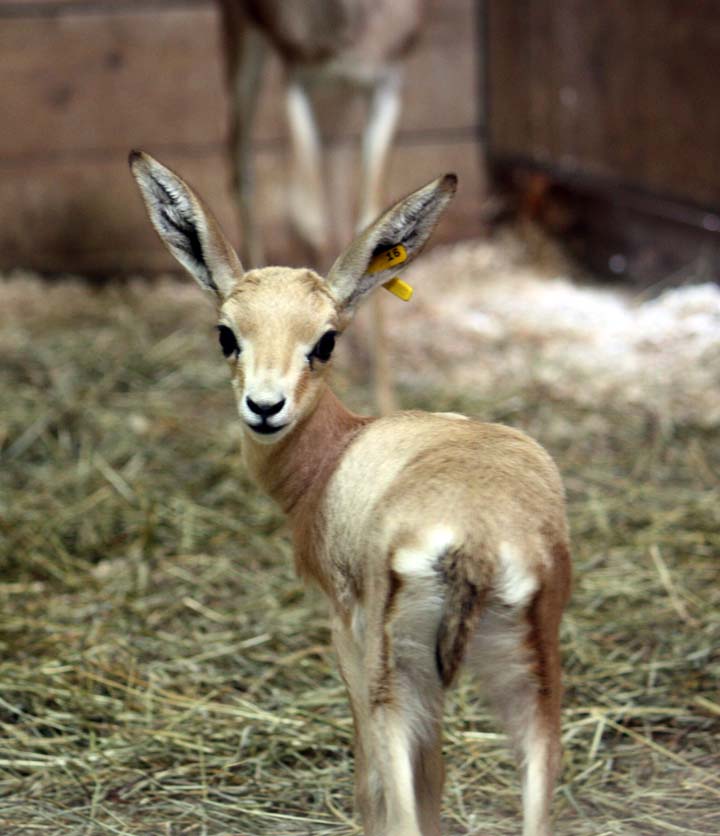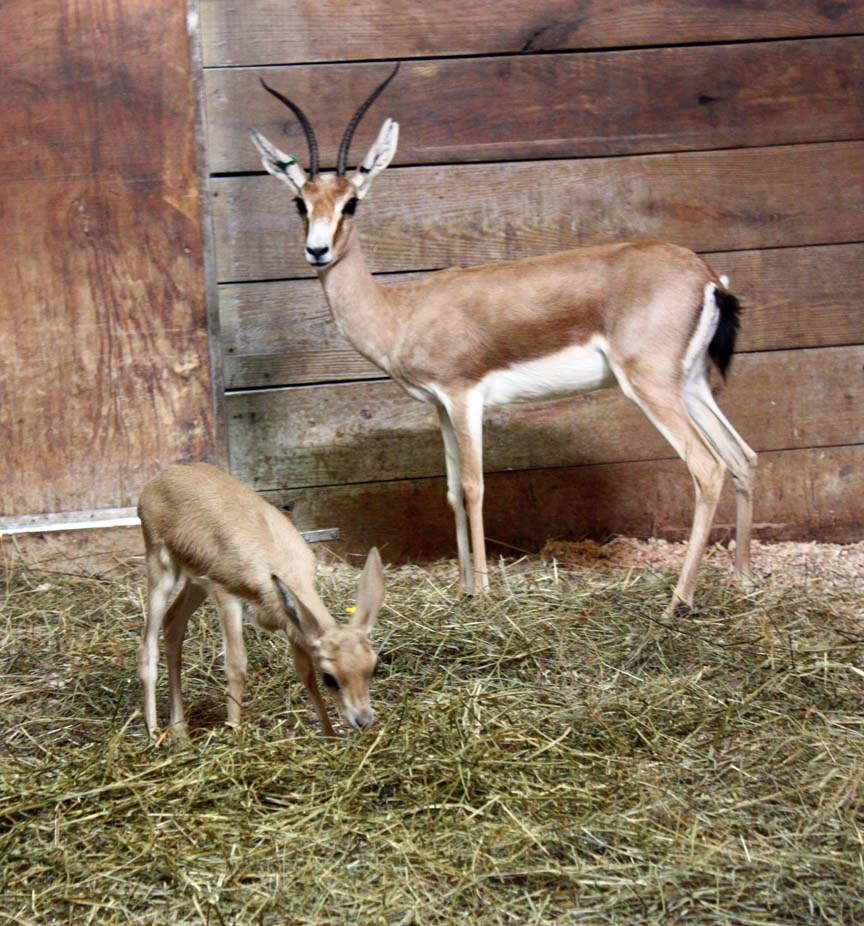Endangered Gazelle Baby Born at Cleveland Zoo


Francis the slender-horned gazelle gave birth to a baby four weeks ago and the public will get a chance to see mother and daughter when they rejoin the rest of the herd in the African savanna exhibit at Cleveland Metroparks Zoo on Aug. 1.
That brings the total number of slender-horned gazelle in the zoo to five.
The little female calf has been off exhibit since being born in late June to give her time to bond with her mother, who came to Cleveland in 2009 from the San Diego Zoo Safari Park. The calf's father, Ziggy, came to the zoo in 2010 from the Sedgwick County Zoo in Wichita, Kan.
Slender-horned gazelles (Gazella leptoceros) are a medium-sized gazelle species averaging about 2.5 feet tall (750 centimeters) and weighing about 60 pounds (27 kilograms). They have large ears and slightly oversized hooves for walking in sand. Both males and females have horns.
Slender-horned gazelles were once one of the most common gazelles in the Sahara Desert. While they still have a wide range, their populations are small and fragmented, and they are classified as endangered by the International Union for Conservation of Nature.
The Zoo participates in the Association of Zoos and Aquariums' species survival plan for slender-horned gazelles, designed to breed and maintain diversity of endangered and threatened species. Other species bred in the program include black rhinos, lowland gorillas, polar bears and African elephants.
Follow OurAmazingPlanet for the latest in Earth science and exploration news on Twitter @OAPlanet. We're also on Facebook andGoogle+.
Get the world’s most fascinating discoveries delivered straight to your inbox.




